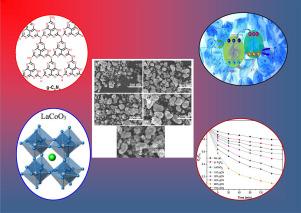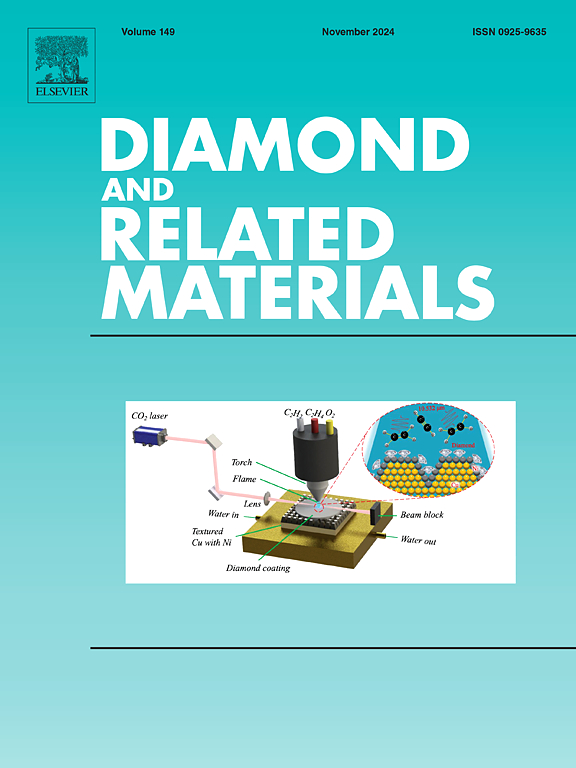Preparation and investigation of physicochemical properties of g-C3N4/LaCoO3 heterostructure for photocatalytic dye degradation
IF 5.1
3区 材料科学
Q2 MATERIALS SCIENCE, COATINGS & FILMS
引用次数: 0
Abstract
Photocatalytic decomposition of pollutant is the most optimal approach for the wastewater remediation. Nevertheless, the development of a catalyst that is both cost-effective and extraordinarily active remains a substantial challenge. The g-C3N4/LaCoO3 heterostructure were prepared by different weight percentages of g-C3N4 (15, 30, 45, 60, and 75 wt%). The g-C3N4 and LaCoO3 were exhibits hexagonal and rhombohedral crystal structure respectively. The g-C3N4/LaCoO3 heterostructure exhibits tiny particles were anchored over the coarse like structure. The g-C3N4/LaCoO3 heterostructure promote visible light harvest and inhibit charge carrier recombination than the bare LaCoO3 and g-C3N4 and which helps to enhance the organic pollutant elimination performances. The g-C3N4/LaCoO3 heterojunction exhibits superior methylene blue degradation when compared to bare LaCoO3 and g-C3N4. Furthermore, the composite of LaCoO3/g-C3N4–60 wt% exhibits higher photocatalytic activity and exceptional stability were observed under visible light irradiation.

用于光催化降解染料的 g-C3N4/LaCoO3 异质结构的制备与理化性质研究
光催化分解污染物是修复废水的最佳方法。然而,开发一种既经济又具有超强活性的催化剂仍然是一项巨大的挑战。g-C3N4/LaCoO3 异质结构的制备采用了不同重量百分比的 g-CN4(15、30、45、60 和 75 wt%)。g-C3N4 和 LaCoO3 分别呈现六方和斜方晶体结构。g-C3N4/LaCoO3 异质结构显示出微小的颗粒锚定在粗糙的类似结构上。与裸 LaCoO3 和 g-C3N4 相比,g-C3N4/LaCoO3 异质结构能促进可见光的收集并抑制电荷载流子的重组,从而有助于提高消除有机污染物的性能。与裸 LaCoO3 和 g-C3N4 相比,g-CN4/LaCoO3 异质结表现出更优越的亚甲基蓝降解性能。此外,在可见光照射下,LaCoO3/g-C3N4-60 wt% 的复合材料表现出更高的光催化活性和优异的稳定性。
本文章由计算机程序翻译,如有差异,请以英文原文为准。
求助全文
约1分钟内获得全文
求助全文
来源期刊

Diamond and Related Materials
工程技术-材料科学:综合
CiteScore
6.00
自引率
14.60%
发文量
702
审稿时长
2.1 months
期刊介绍:
DRM is a leading international journal that publishes new fundamental and applied research on all forms of diamond, the integration of diamond with other advanced materials and development of technologies exploiting diamond. The synthesis, characterization and processing of single crystal diamond, polycrystalline films, nanodiamond powders and heterostructures with other advanced materials are encouraged topics for technical and review articles. In addition to diamond, the journal publishes manuscripts on the synthesis, characterization and application of other related materials including diamond-like carbons, carbon nanotubes, graphene, and boron and carbon nitrides. Articles are sought on the chemical functionalization of diamond and related materials as well as their use in electrochemistry, energy storage and conversion, chemical and biological sensing, imaging, thermal management, photonic and quantum applications, electron emission and electronic devices.
The International Conference on Diamond and Carbon Materials has evolved into the largest and most well attended forum in the field of diamond, providing a forum to showcase the latest results in the science and technology of diamond and other carbon materials such as carbon nanotubes, graphene, and diamond-like carbon. Run annually in association with Diamond and Related Materials the conference provides junior and established researchers the opportunity to exchange the latest results ranging from fundamental physical and chemical concepts to applied research focusing on the next generation carbon-based devices.
 求助内容:
求助内容: 应助结果提醒方式:
应助结果提醒方式:


